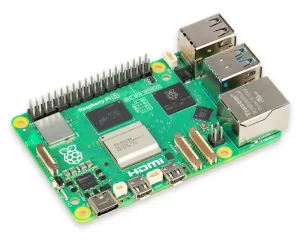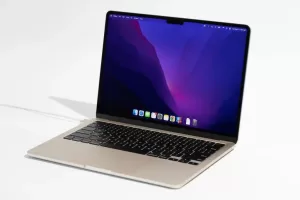
Does the Raspberry Pi Outperform a Laptop?
January 17 2024  1140
1140
Inquiry
Global electronic component supplier AMPHEO PTY LTD: Rich inventory for one-stop shopping. Inquire easily, and receive fast, customized solutions and quotes.
QUICK RFQ
ADD TO RFQ LIST
In this blog, we aim to explore the functionalities, applications, and comparative advantages of the Raspberry Pi and laptops, shedding light on their respective roles in modern computing.
What's Raspberry Pi?

Raspberry Pi Power Requirements
- All Raspberry Pi models require a 5.1V power supply.
- The connector type differs:
- Micro USB: Raspberry Pi 0/1/2/3
- USB-C: Raspberry Pi 4/400/5
- The amperage (current) needed also varies:
- 2.5A or less: Raspberry Pi 0/1/2/3 (basic use)
- 3A: Raspberry Pi 4/400/5 (basic use)
- Higher amperage: For heavy tasks or using many peripherals like USB hard drives or cameras
What is a Laptop?

When Laptop Was Invented?
Although the idea for a portable computer was first proposed in the 1970s, the Osborne Computer Corporation launched the Osborne 1 in 1981, marking the birth of the contemporary laptop as we know it today.How Raspberry Pi Works?
- Plugging in the Power:
- Link the Pi's power input to the micro USB or USB-C power supply. Always use the appropriate amperage (2.5A or 3A, depending on your model and activity) to get the best out of it.
- When power is obtained, a green LED on the Pi will turn on.
- Booting Up the Brain:
- The Central Processing Unit (CPU), the brain of the Pi, receives power. As it awakens, internal registers are initialized and it becomes ready to carry out commands.
- To guarantee a safe boot, the Secure Boot procedure checks the MicroSD card's operating system's integrity.
- Loading the Operating System:
- The boot partition is read by the Pi when it accesses the MicroSD card. The bootloader, a software that loads the primary operating system, is contained in here.
- The operating system image (such as Raspbian) is recognized by the bootloader, which then installs it onto the Pi's short-term memory, Random Access Memory (RAM).
- Launching the Show:
- The central component of the system, the operating system kernel, assumes command. It turns on necessary drivers and services, like those for the keyboard, display, and network interface.
- Finally, the login screen or desktop environment of the operating system of your choice will appear. You will recognize the boot messages by now.
- Connecting and Interacting:
- To communicate with the Pi, you can attach a USB or Bluetooth keyboard and mouse. The graphical interface can be viewed on a monitor or TV by connecting an HDMI cable.
- To access the internet, if you have an Ethernet cable, connect it to your network. Certain models additionally have Wi-Fi options.
- Exploring and Creating:
- You can install and use a variety of applications after logging in, including games, multimedia software, coding tools, and web browsers.
- Connecting sensors, LEDs, and other devices to the Pi's General-Purpose Input/Output (GPIO) pins opens up possibilities for robotics, automation, and other inventive projects.
- Powering Down:
- When you're finished, use the shutdown option in the operating system to safely shut down the Pi. This guarantees data saving and program closure in a proper manner.
- To fully shut down the Pi, unplug the power source.
How Laptop Works?
- Power On: The system is started by applying electrical current from the battery or power adapter when you push the power button.
- Boot Process: The laptop's software, often known as the BIOS or UEFI, finds and loads the operating system from the storage device after initializing the hardware and doing a power-on self-test (POST) to check for hardware problems.
- Operating System Initialization: After loading into the laptop's RAM, the operating system—such as Windows, macOS, or Linux—begins to manage the system's resources. It offers a user interface for working with files and programs.
- User Input: Users can enter commands and interact with the operating system and applications using the keyboard, touchpad, trackpad, and other input devices.
- CPU Processing: The laptop's central processing unit (CPU) carries out computations and interprets instructions to carry out a variety of functions. It makes the required calculations by retrieving information and commands from memory.
- Memory Management: Data and instructions that the CPU needs to access quickly are temporarily stored in memory (RAM). It contains the data, apps, and operating system that are now in use.
- Storage Access: Data is retrieved from the operating system, applications, and user files by the storage device, which is usually a hard drive or solid-state drive. In order for the CPU to process this data, it moves it to memory.
- Display Output: The display, which is frequently an LCD screen, gives the user access to visual data so they may view material and interact with the system.
- Input/Output Management: To enable users to enter commands and receive responses from the system, the operating system manages the input and output devices, including the keyboard, touchpad or trackpad, display, and ports.
- Application Execution: Using the laptop's software, users can start apps, open files, and carry out a variety of operations. The CPU processes the instructions, while the RAM stores the relevant data.
Video related to Raspberry Pi laptop VS other laptops
Where Raspberry Pi is Used?
- Development and Prototyping: The Raspberry Pi is a well-liked platform for developing and prototyping new products and solutions in industries like consumer electronics, embedded systems, and the Internet of Things.
- Home Automation: The Raspberry Pi is used in home automation projects to construct IoT (Internet of Things) solutions, control smart devices, and design unique home automation systems.
- Digital Signage: As an affordable means of showing dynamic material, Raspberry Pis are used to power digital signage displays in public areas, retail settings, and commercial buildings.
- Robotics: The Raspberry Pi is the brains behind a lot of robotics projects, allowing amateurs and experts to construct and program robots for a range of uses, such as entertainment, research, and teaching.
- Education: Raspberry Pi is frequently used in classrooms to teach computer science, electronics, and programming principles. It offers students an accessible and reasonably priced platform to learn computer skills and work on their own projects.
- Media Centers: Users can stream video, play games, and access online material on their TVs by building media centers and home entertainment systems with Raspberry Pis.
- Industrial Applications: Because of its small size, low power consumption, and adaptability, Raspberry Pi is being utilized more and more in industrial settings for automation, control, and monitoring applications.
Raspberry Pi for Gaming
By running vintage game emulators, building custom game consoles, and creating interactive gaming projects, Raspberry Pi can be utilized for gaming. It is the perfect platform for developers and game enthusiasts due to its small size and adaptability.Which Laptop is Best for Personal Use?
Depending on personal needs, such as productivity, leisure, gaming, or creative work, there are different laptops that are better for different purposes. When selecting a personal laptop, factors to take into account include portability, performance, battery life, display quality, and features customized to meet unique demands.How to Control Raspberry Pi Remotely?
There are a few ways to remotely control a Raspberry Pi, such as SSH (Secure Shell) and VNC (Virtual Network Computing). With the help of these technologies, users can use a network to access and control their Raspberry Pi from another device.How to Connect Raspberry Pi to Cloud?
- Pick a Cloud Service: Opt for a cloud service provider who satisfies your needs. Amazon Web Services (AWS), Microsoft Azure, Google Cloud Platform, and other IoT-specific platforms are popular choices.
- Create an Account: Establish an account with the cloud service provider of your choice, then configure the required login credentials and permissions to gain access to the cloud services.
- Install any necessary software. Install any required libraries or software on the Raspberry Pi to allow cloud connectivity. Installing client libraries, SDKs (Software Development Kits), or particular IoT tools that the cloud provider offers may be necessary for this.
- Configure Network Connectivity: In order for the Raspberry Pi to connect to the internet and communicate with the cloud services, it is necessary to make sure that it has network connectivity, either via Ethernet or Wi-Fi.
- Create or Configure an IoT Application: Using a Raspberry Pi, create an IoT application that gathers, analyzes, or communicates with sensors. As an alternative, set up an already-existing application to talk to the cloud.
- Use Cloud APIs: To send data from the Raspberry Pi to the cloud and receive commands or updates from the cloud to the Raspberry Pi, make use of the APIs (Application Programming Interfaces) provided by the cloud service.
- Put Security Measures in Place: Use security best practices, such as access control, encryption, and secure communication protocols, to safeguard communication between the Raspberry Pi and the cloud.
- Test and Deploy: Install the IoT application to begin transmitting and receiving data from the cloud, then test the Raspberry Pi's functioning and connectivity with the cloud services.
How to Reset Raspberry Pi?
Resetting a Raspberry Pi entails fixing software problems or returning it to its original configuration. There are a few ways to accomplish this, such as reinstalling the operating system or reformatting the SD card.When Laptop Battery is Not Charging?
There may be problems with the power adapter, battery, charging port, software settings, or the laptop itself if the battery is not charging. Examining the battery and its charging components, altering power management settings, and checking the power supply are among possible troubleshooting options.Conclusion
In conclusion, the Raspberry Pi and laptops have different uses and may accommodate a range of computing requirements. Laptops give the power, adaptability, and mobility needed for professional, personal, and recreational use, while the Raspberry Pi offers a small, reasonably priced platform for learning, experimenting, and different projects. Both gadgets add to the rich environment of contemporary computing, whether one is choosing the ideal laptop for daily use or investigating the possibilities of the Raspberry Pi for creative endeavors.Populer Posts
XC4010-5PQ208C
AMD
EP3C120F484C7
Intel
APA600-CGS624B
Microchip Technology
5SGXMA5N3F40I3G
Intel
EP3C25F256C6N
Intel
10M50DCF484I7G
Intel
5SGXMA7H3F35C4G
Intel
EP4SGX230FF35C3G
Intel
10M40DCF672C8G
Intel
EP2AGX190FF35C5
Intel
5SGSMD4K3F40I4G
Intel
